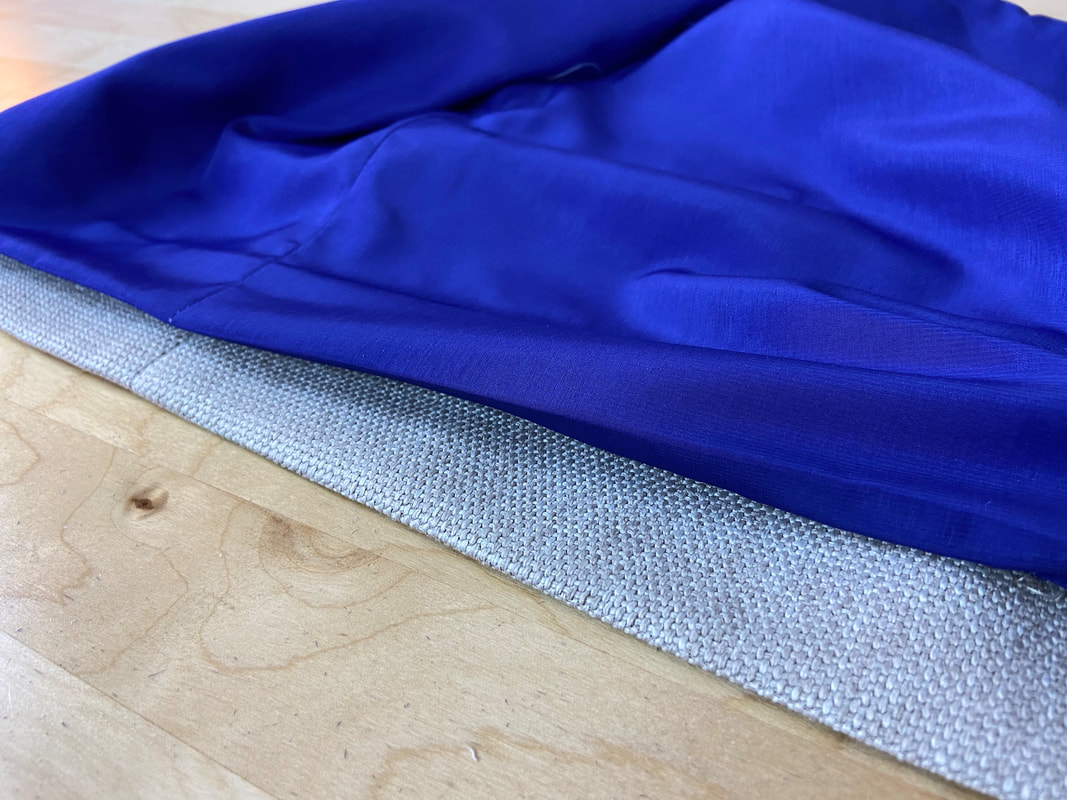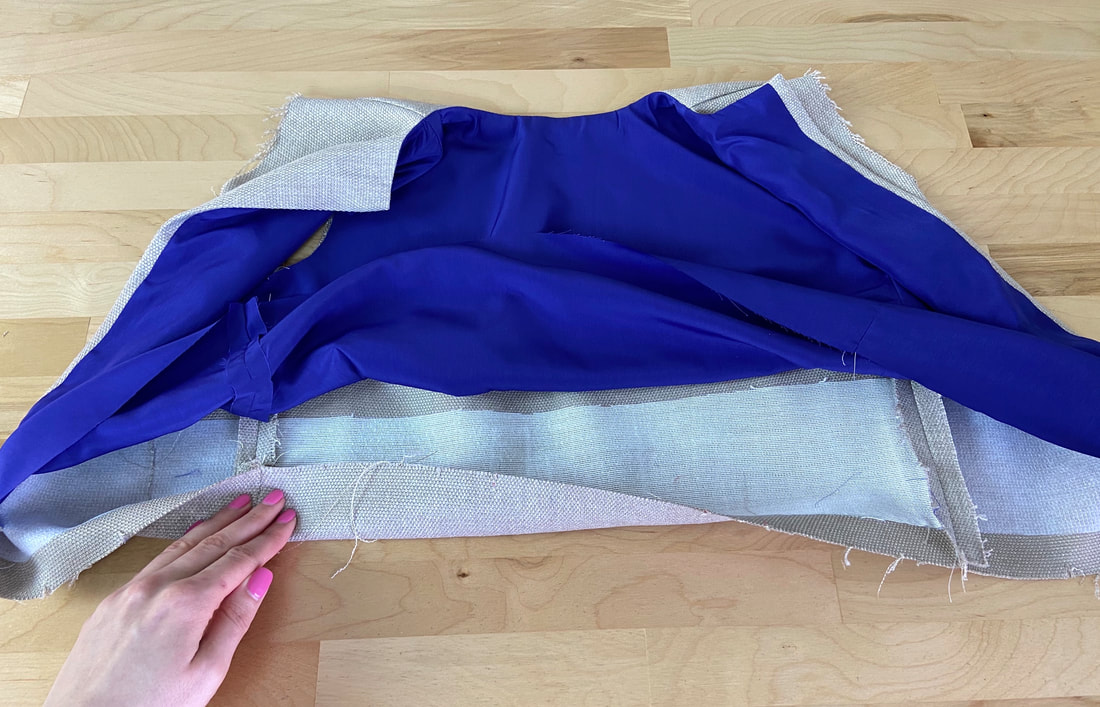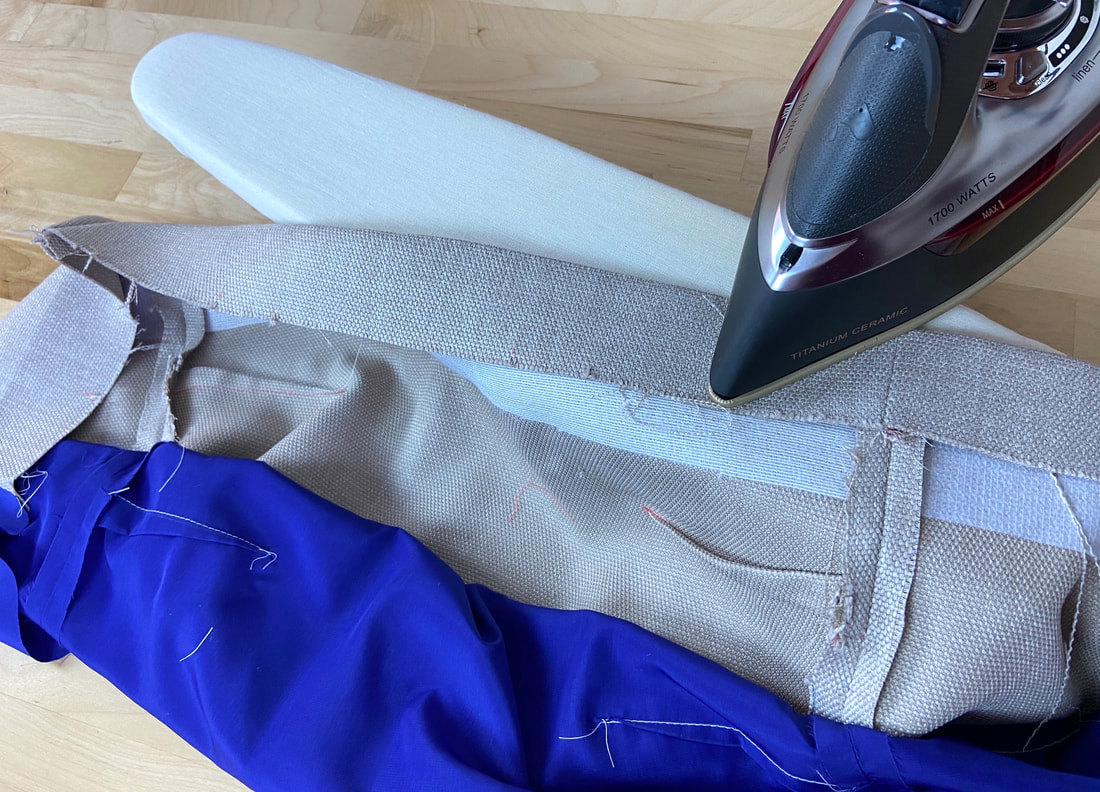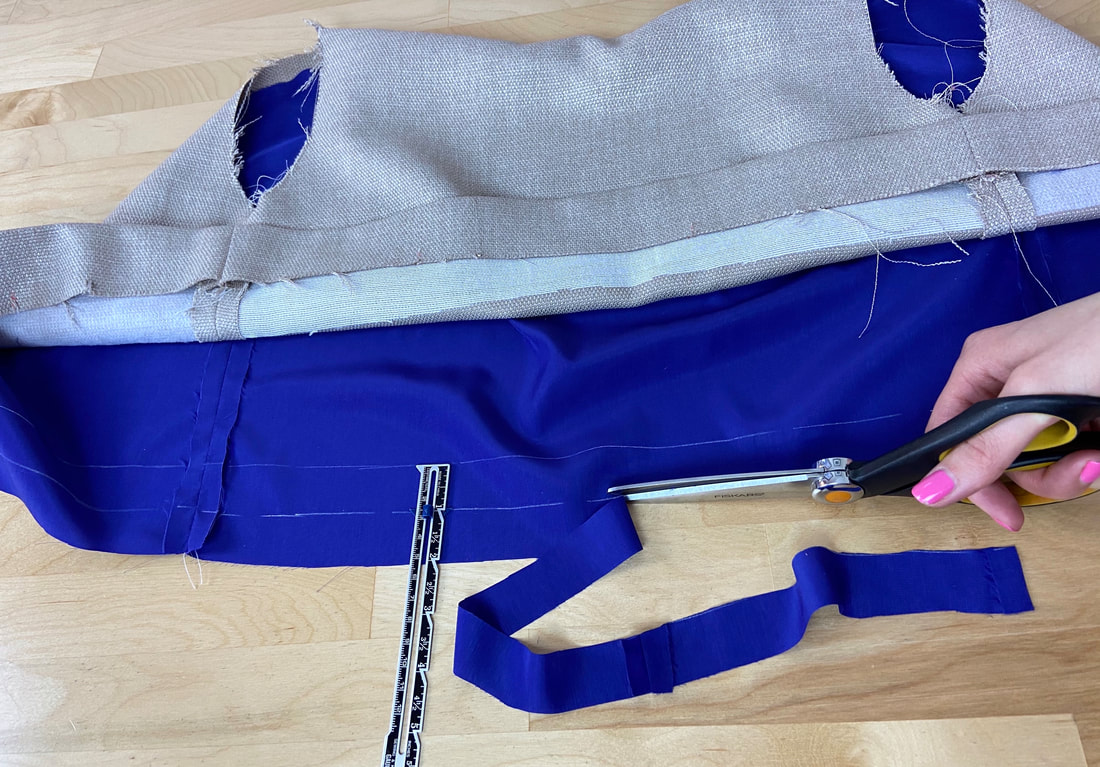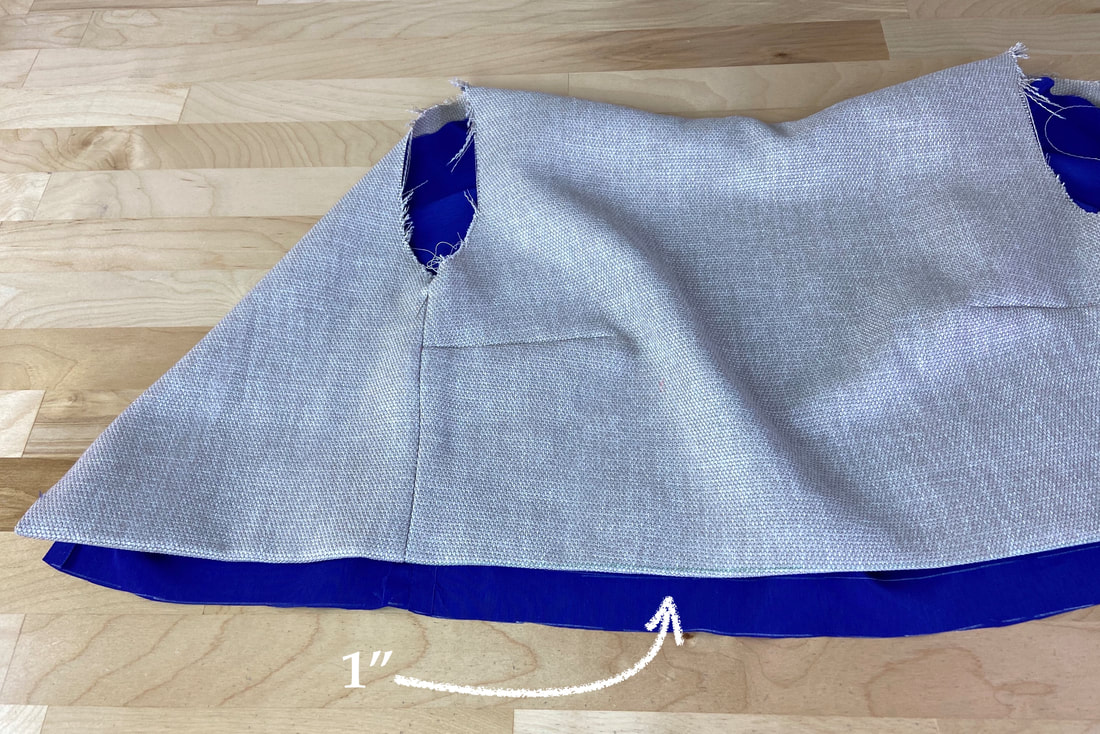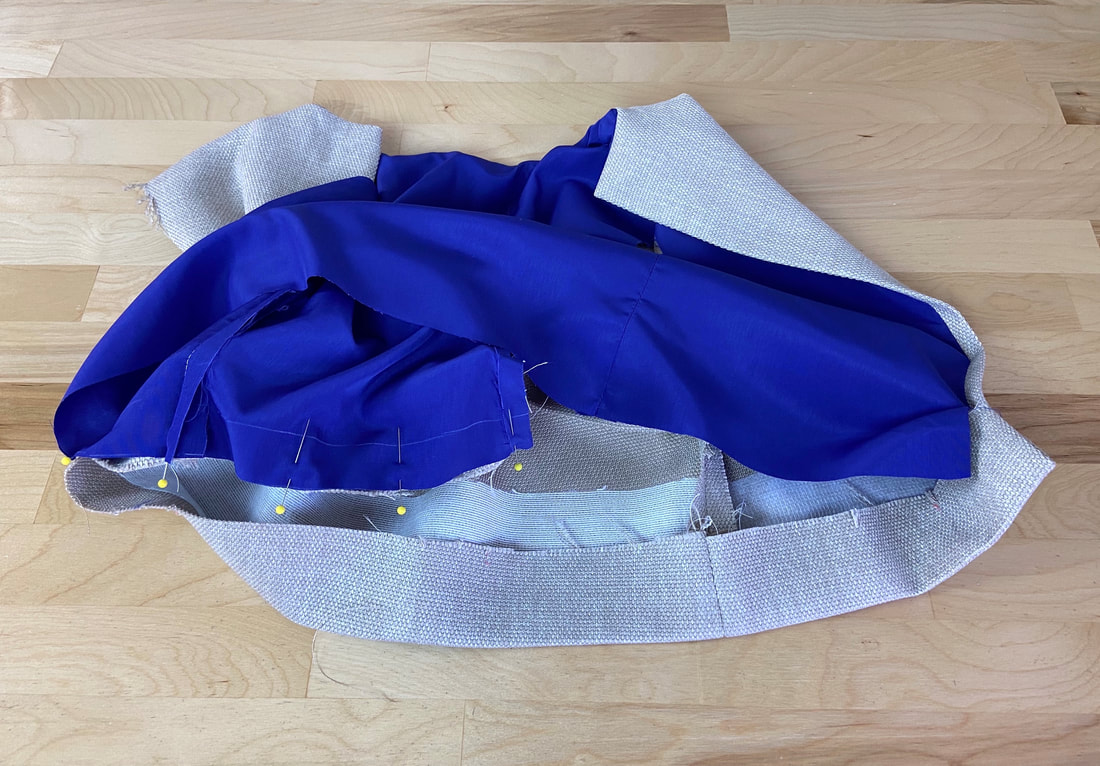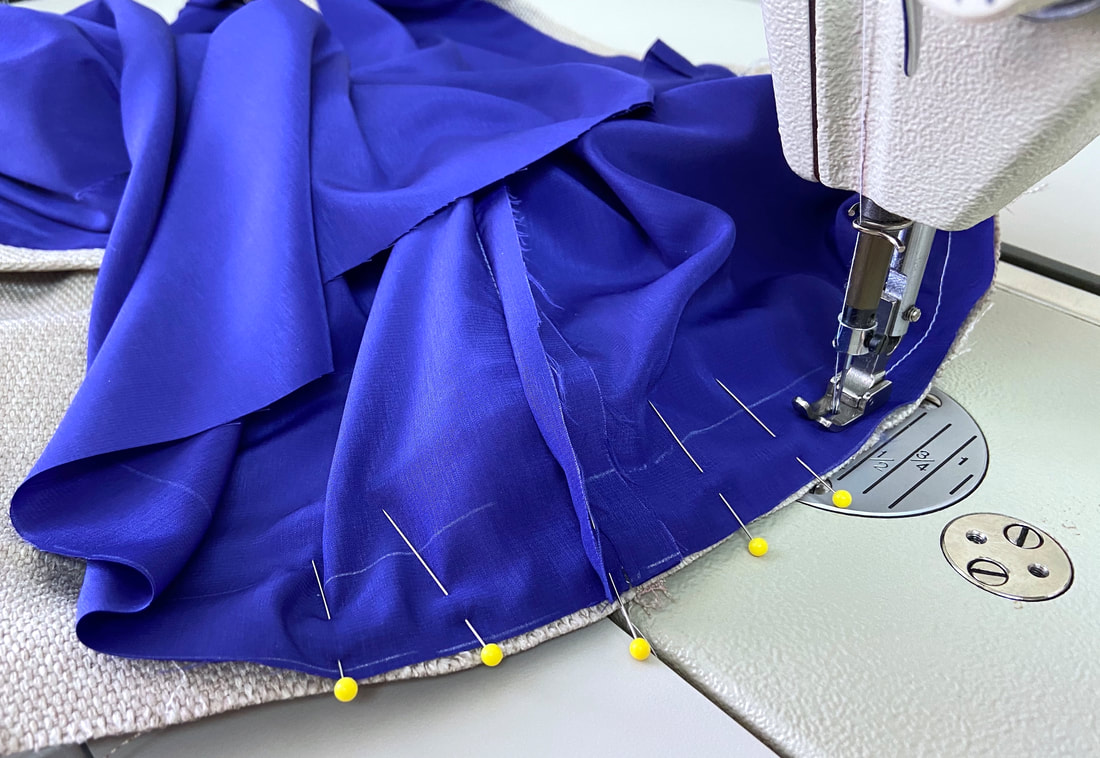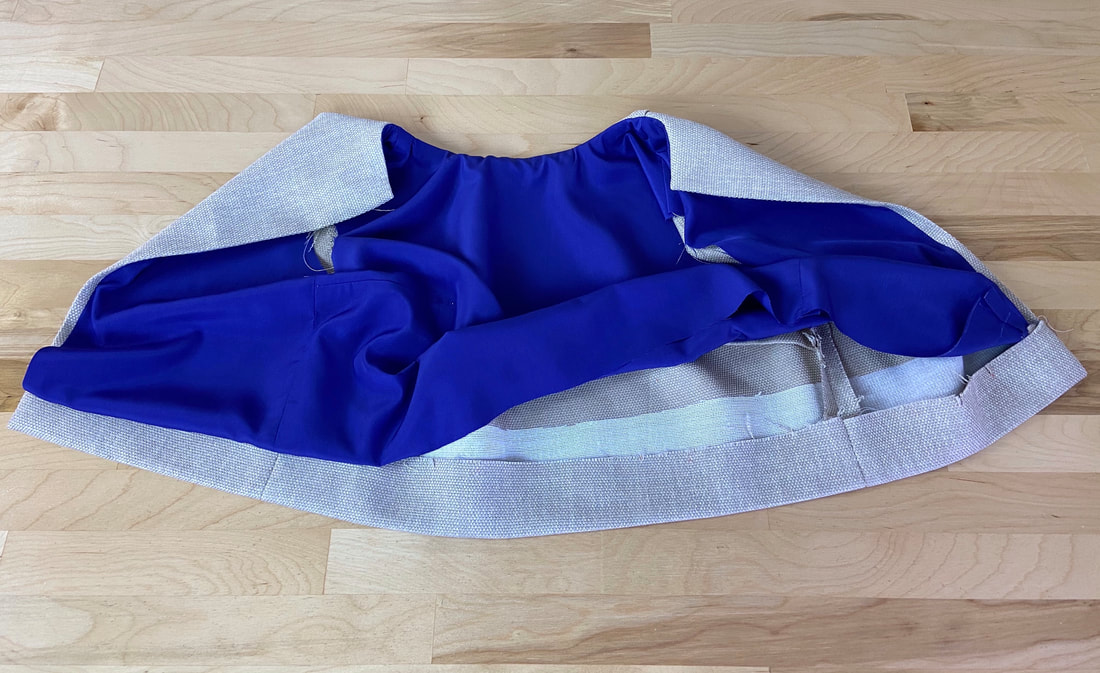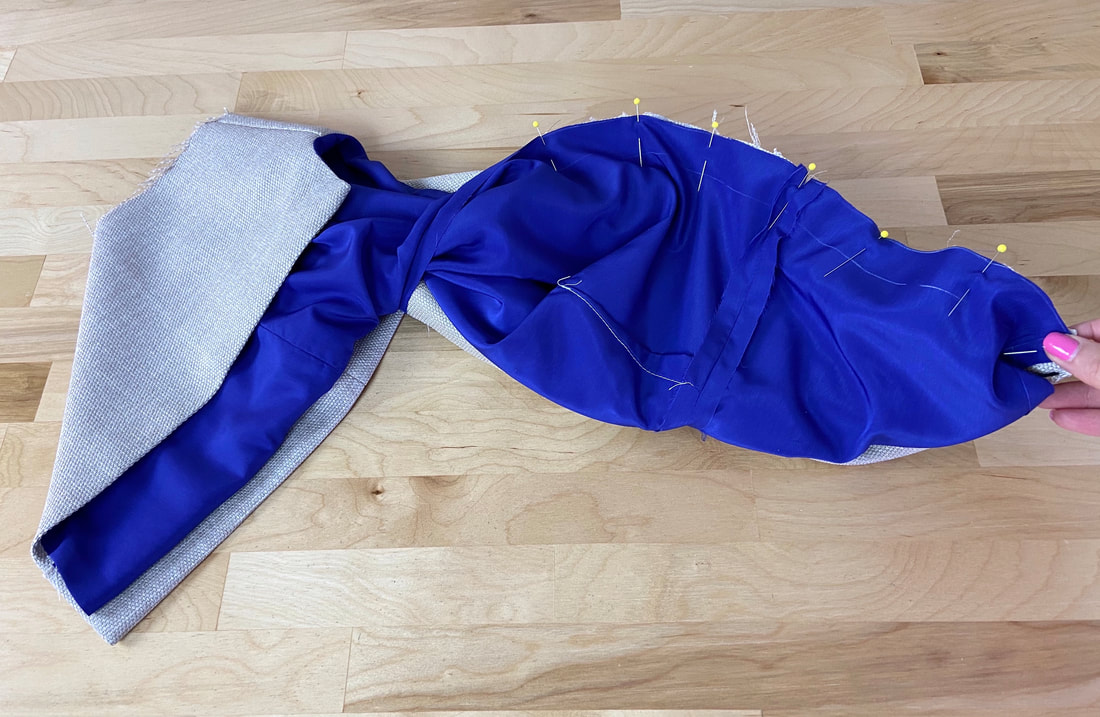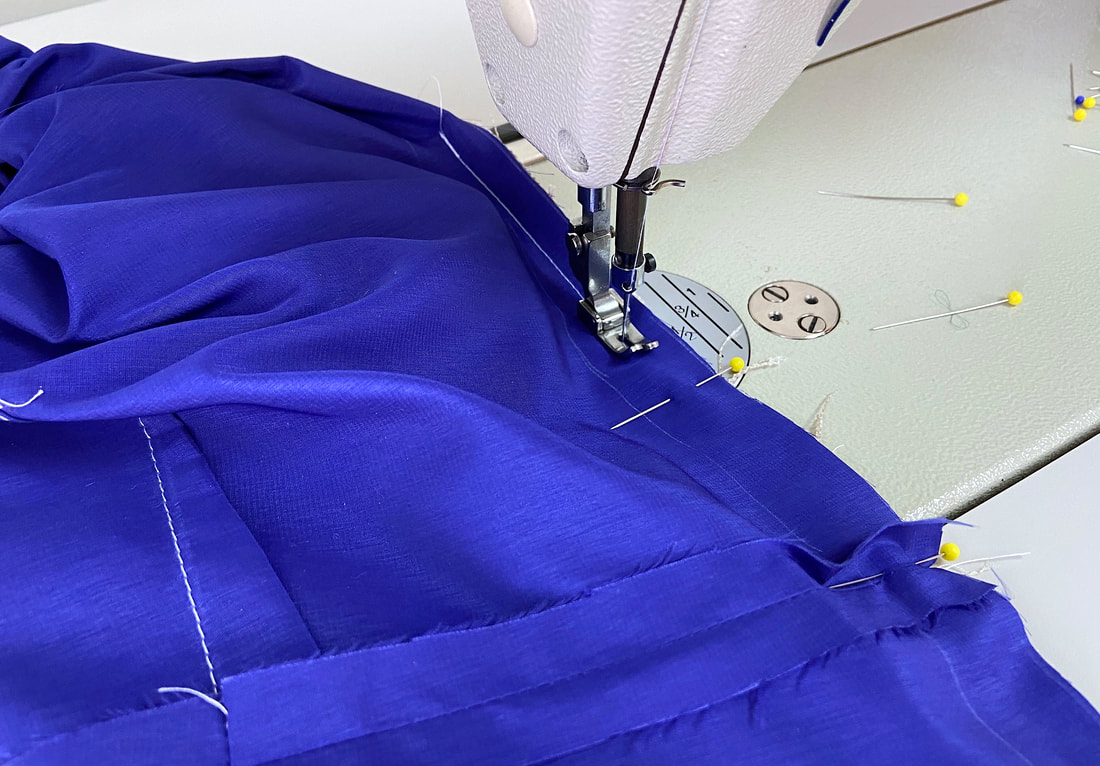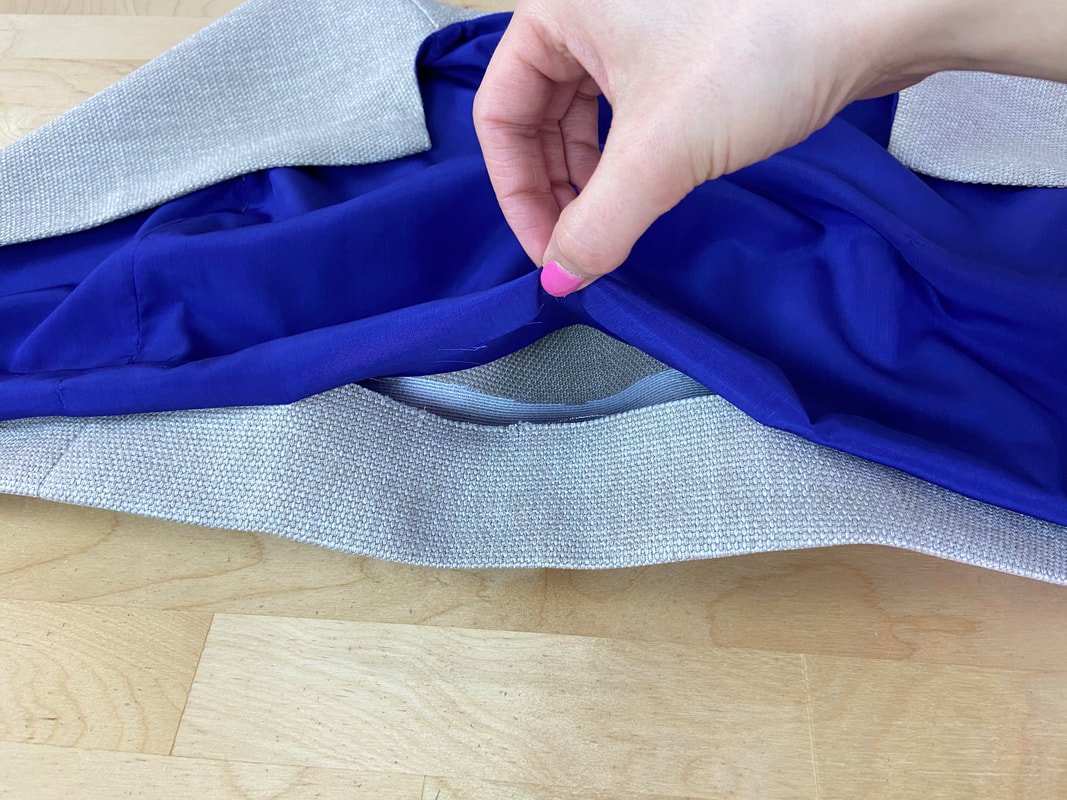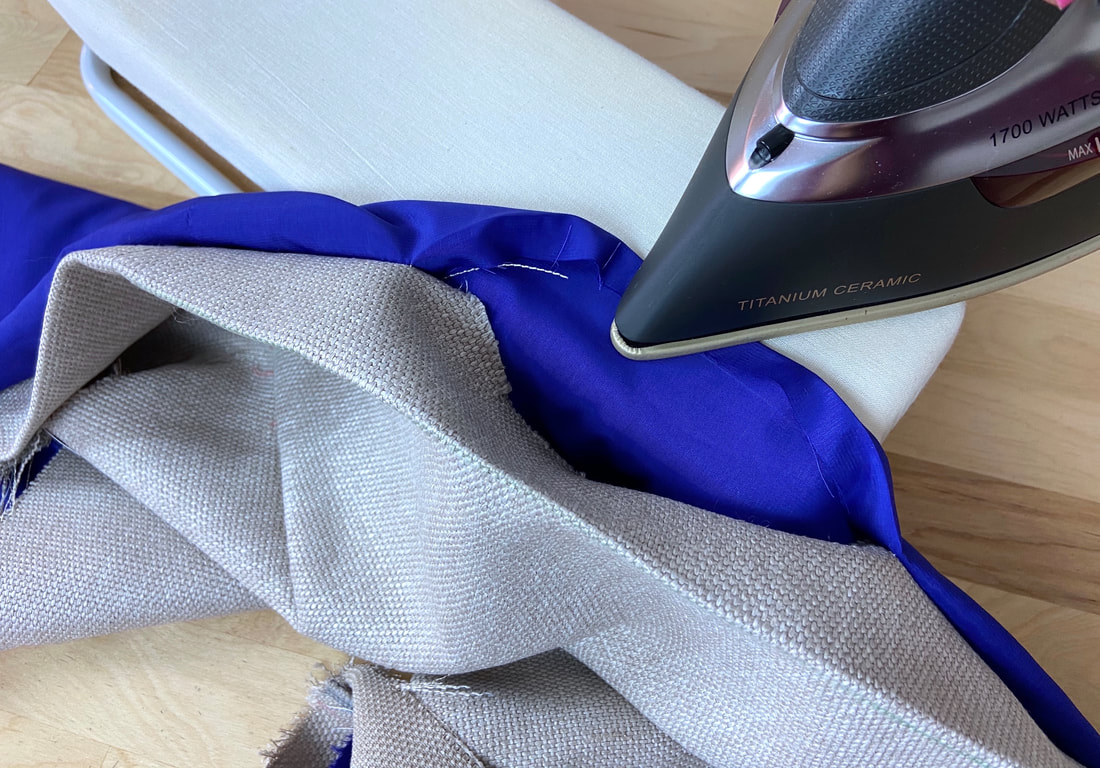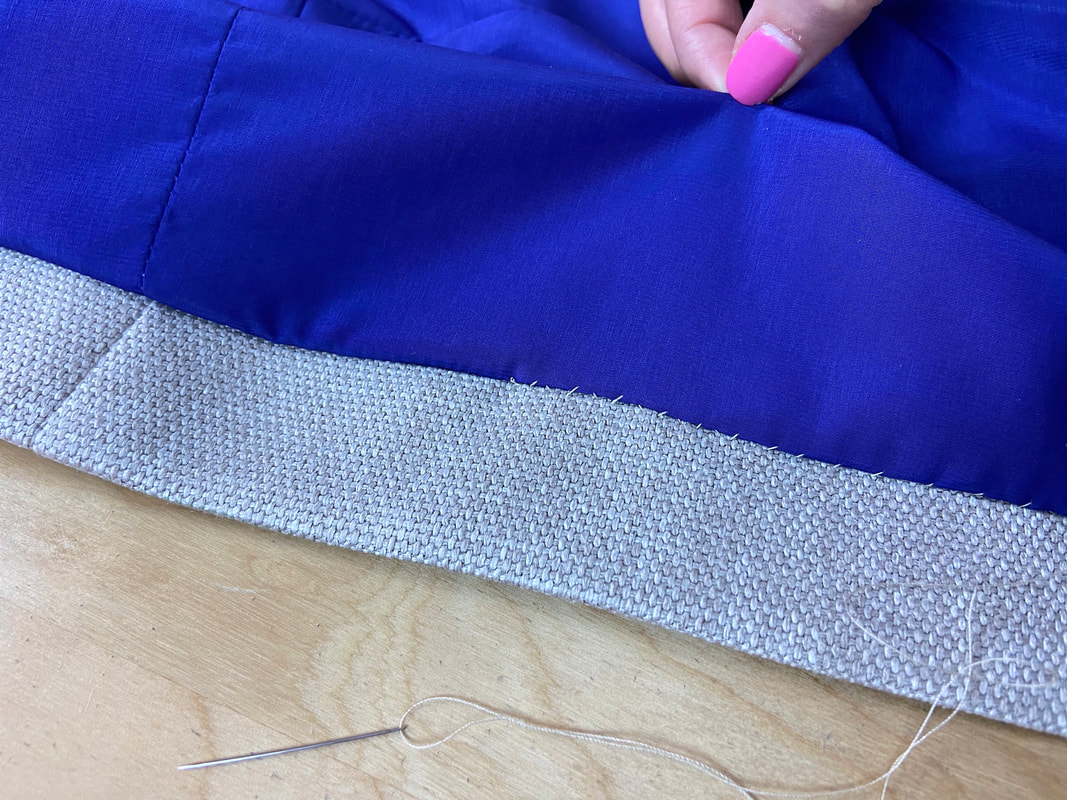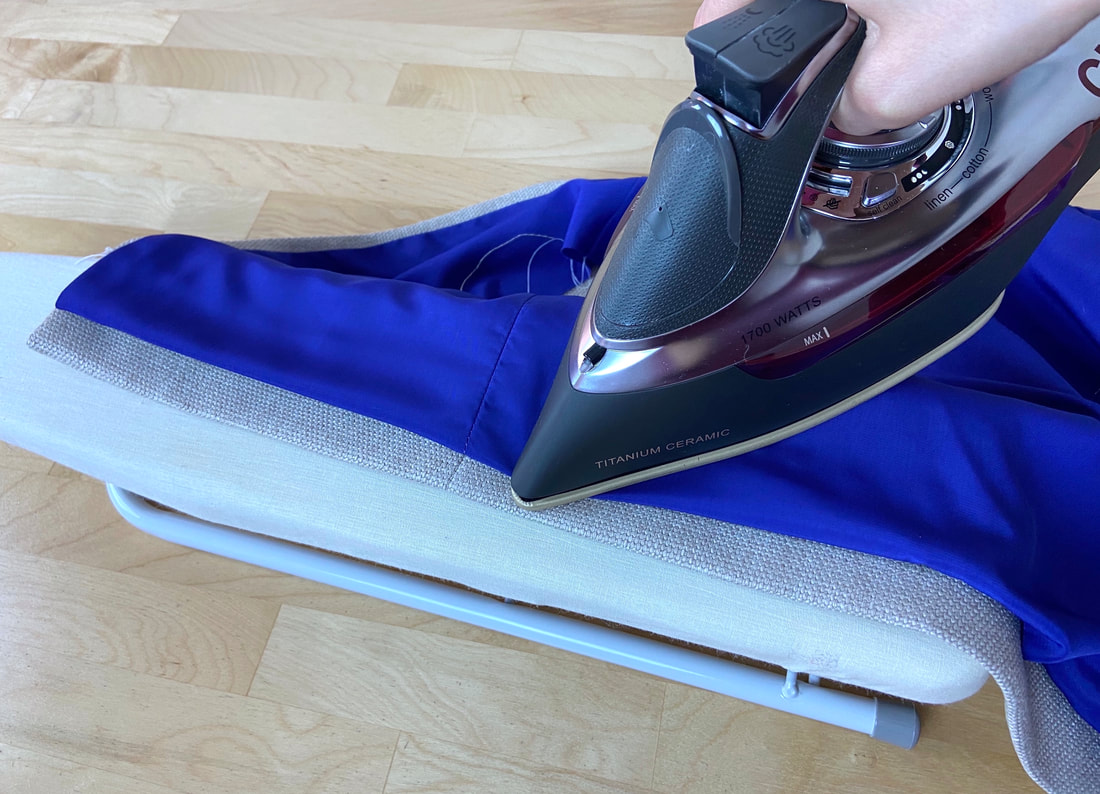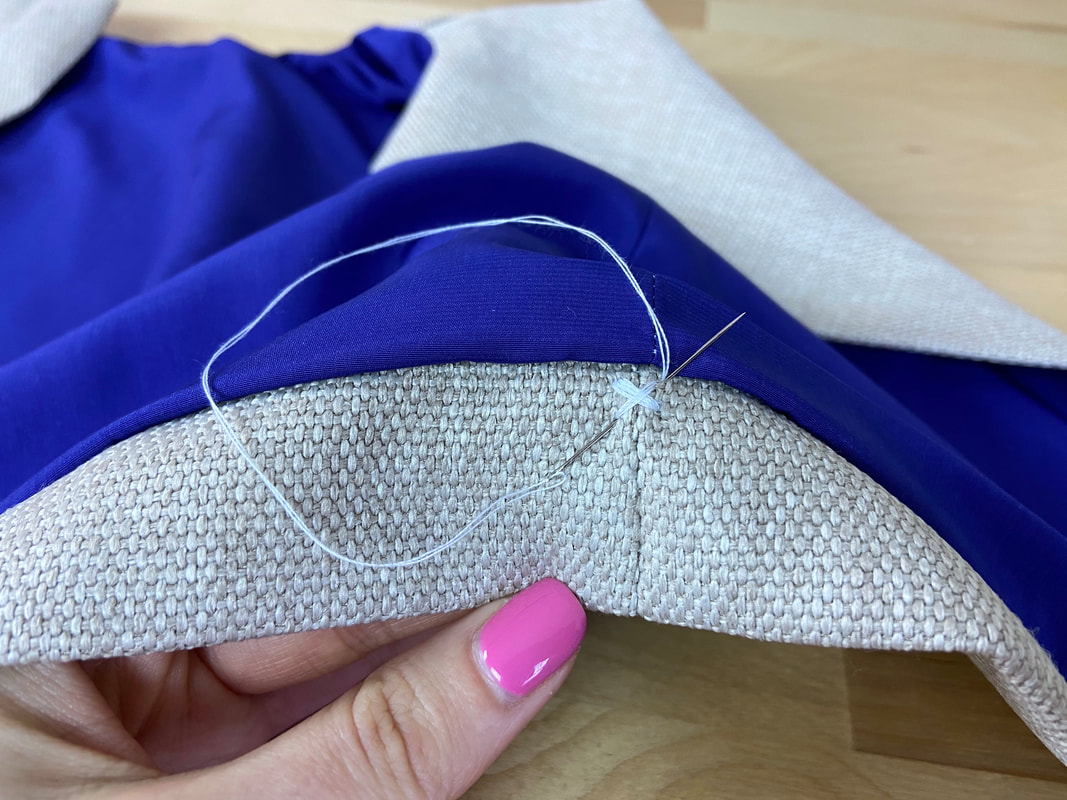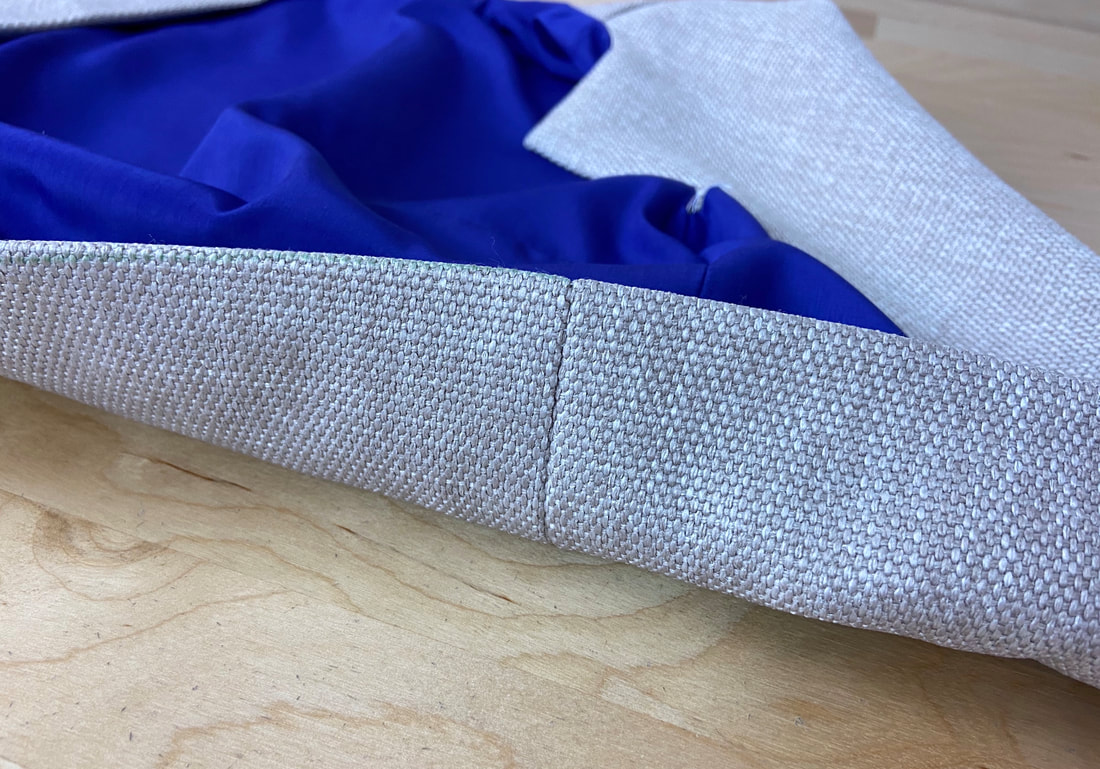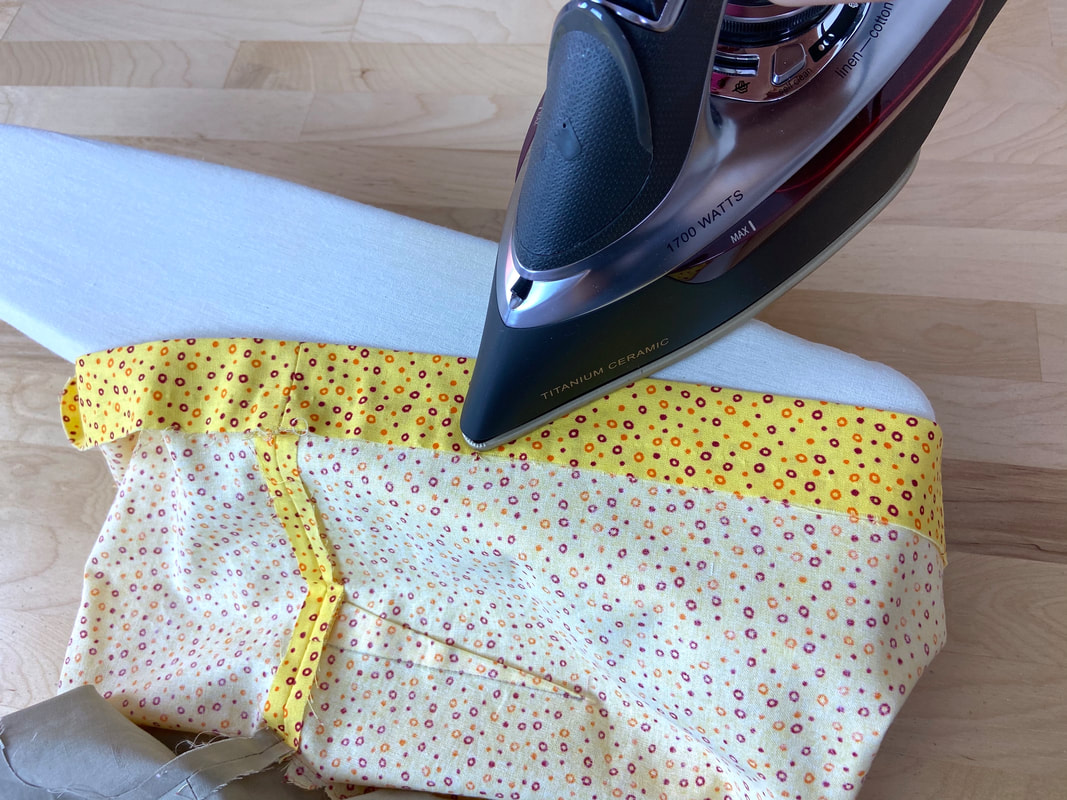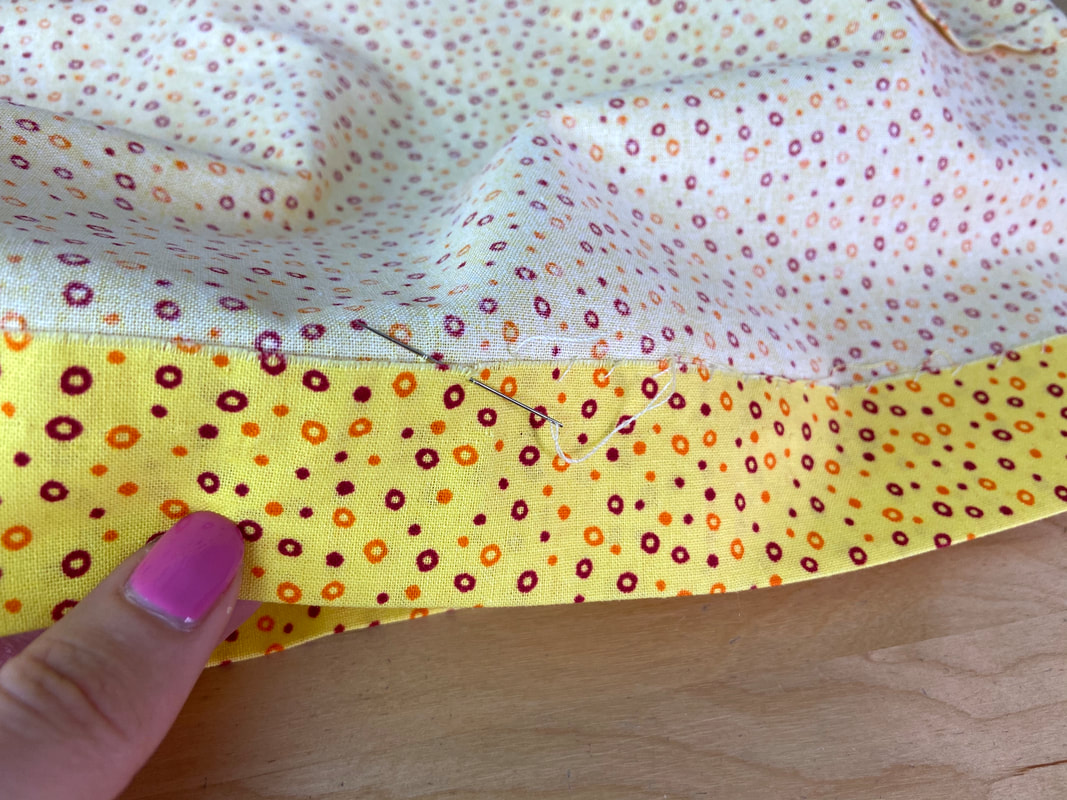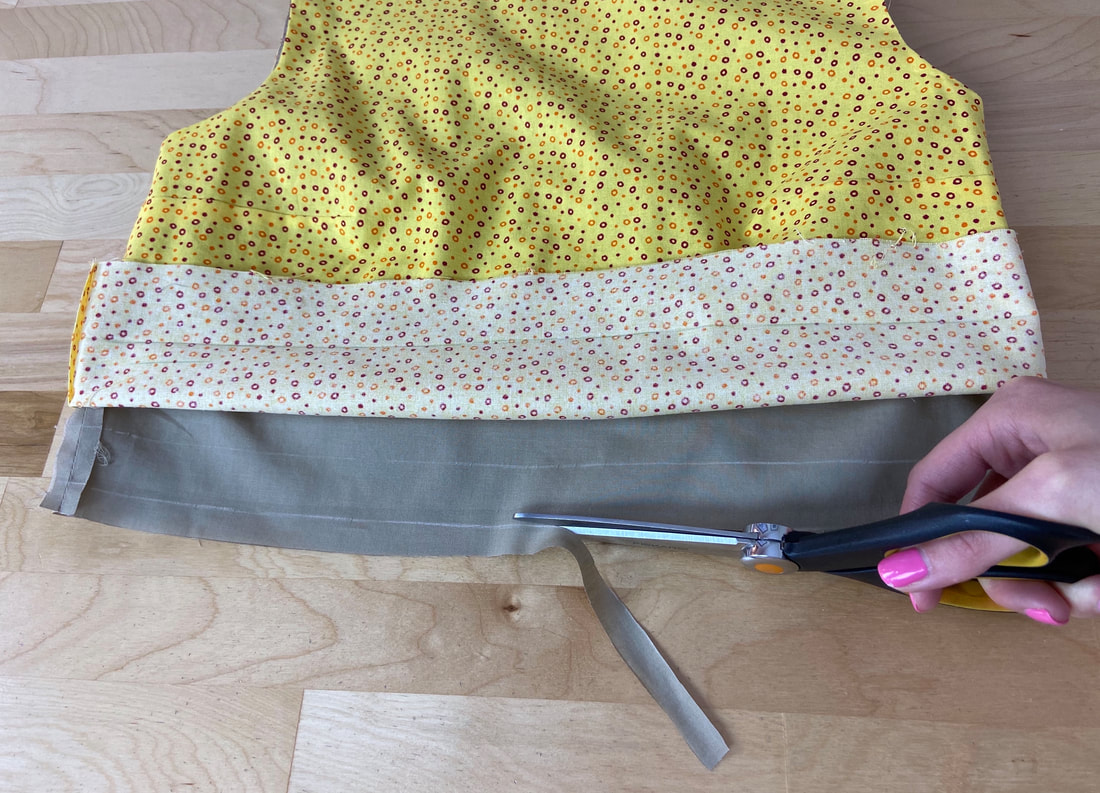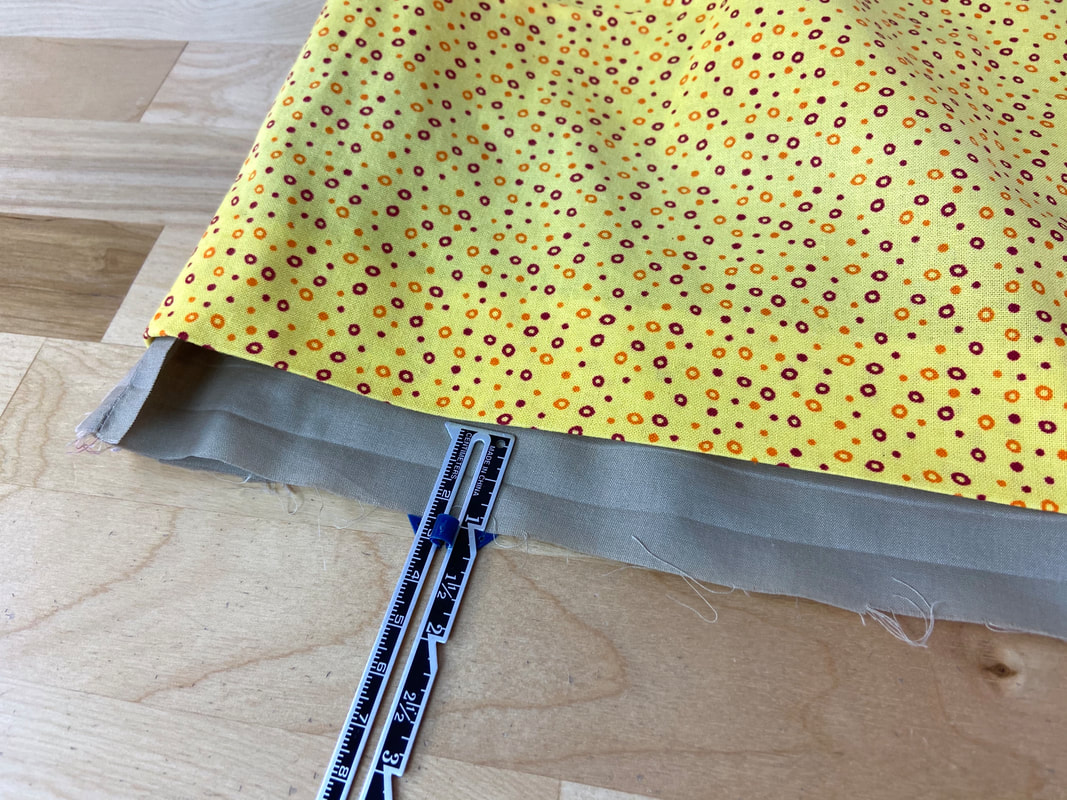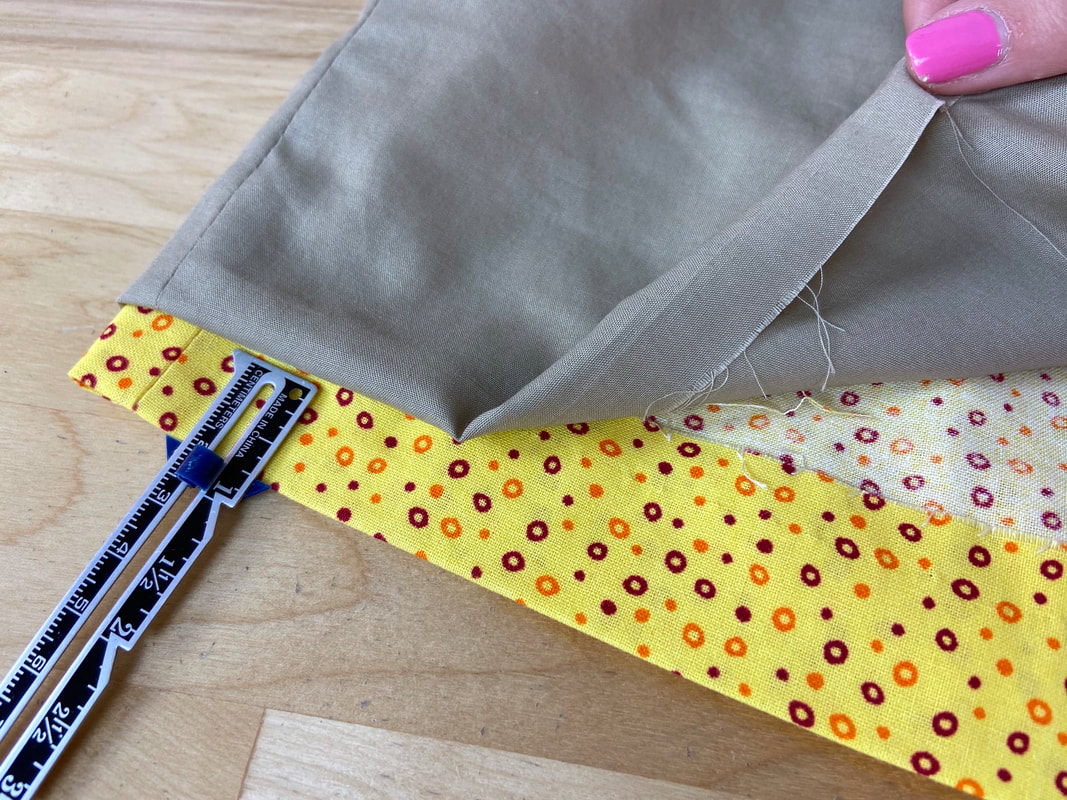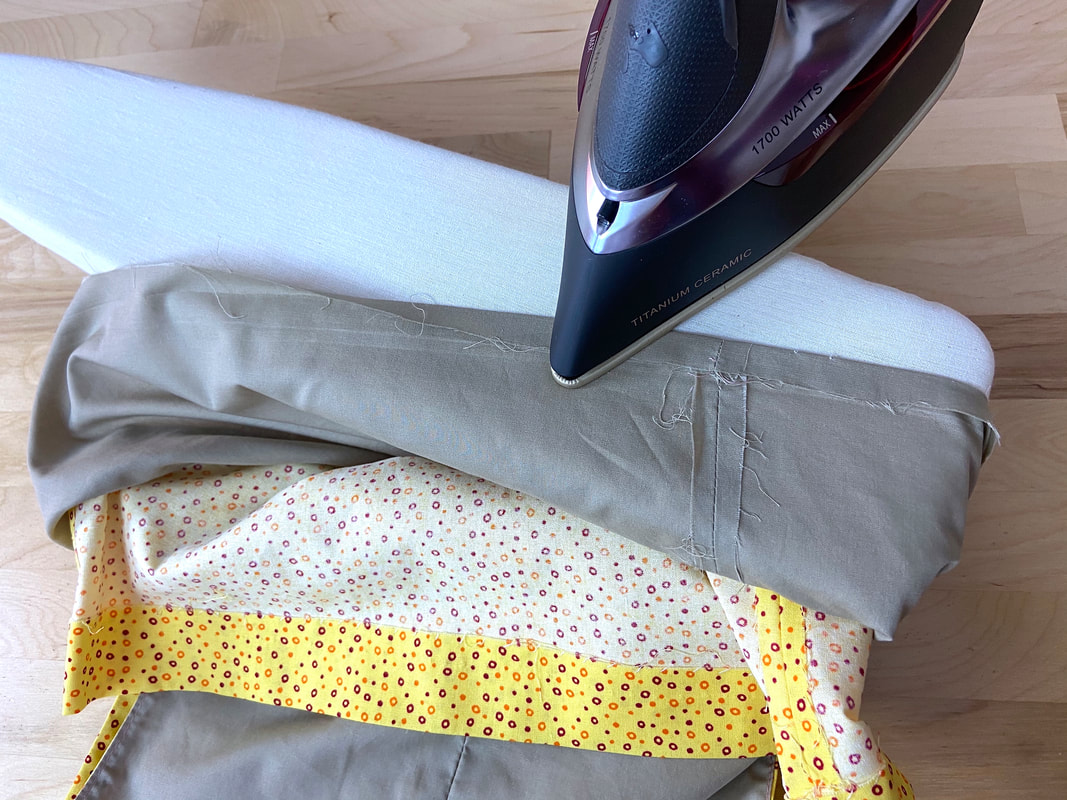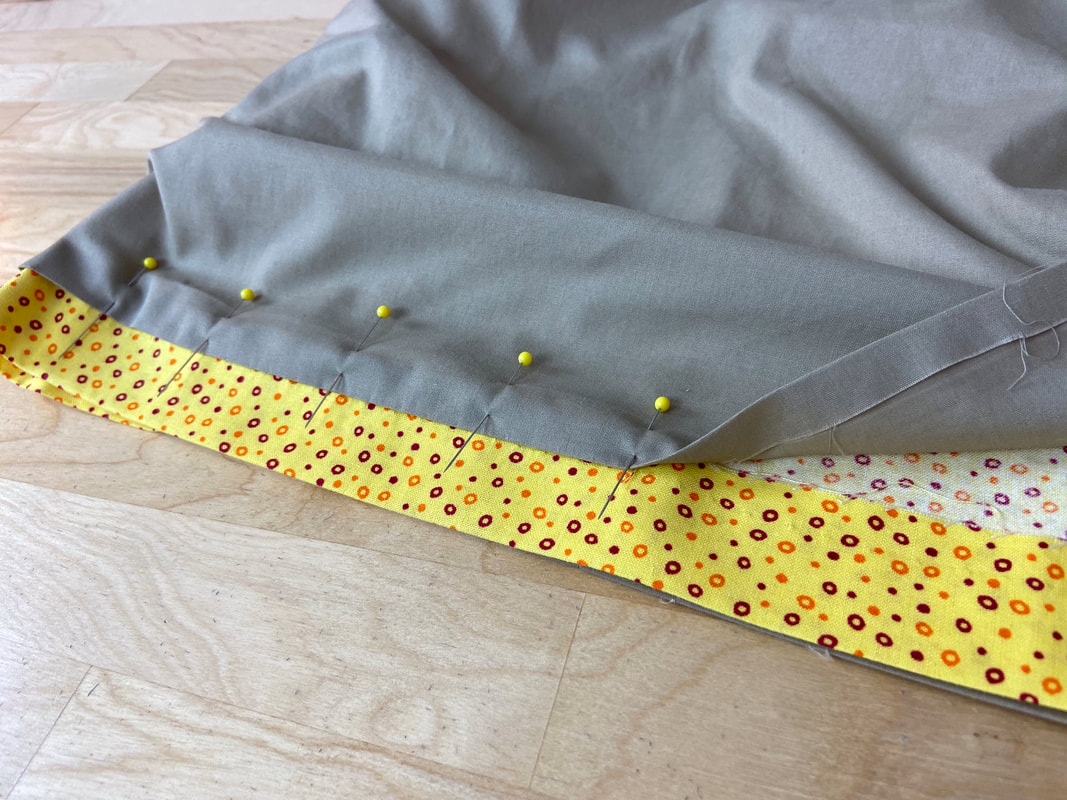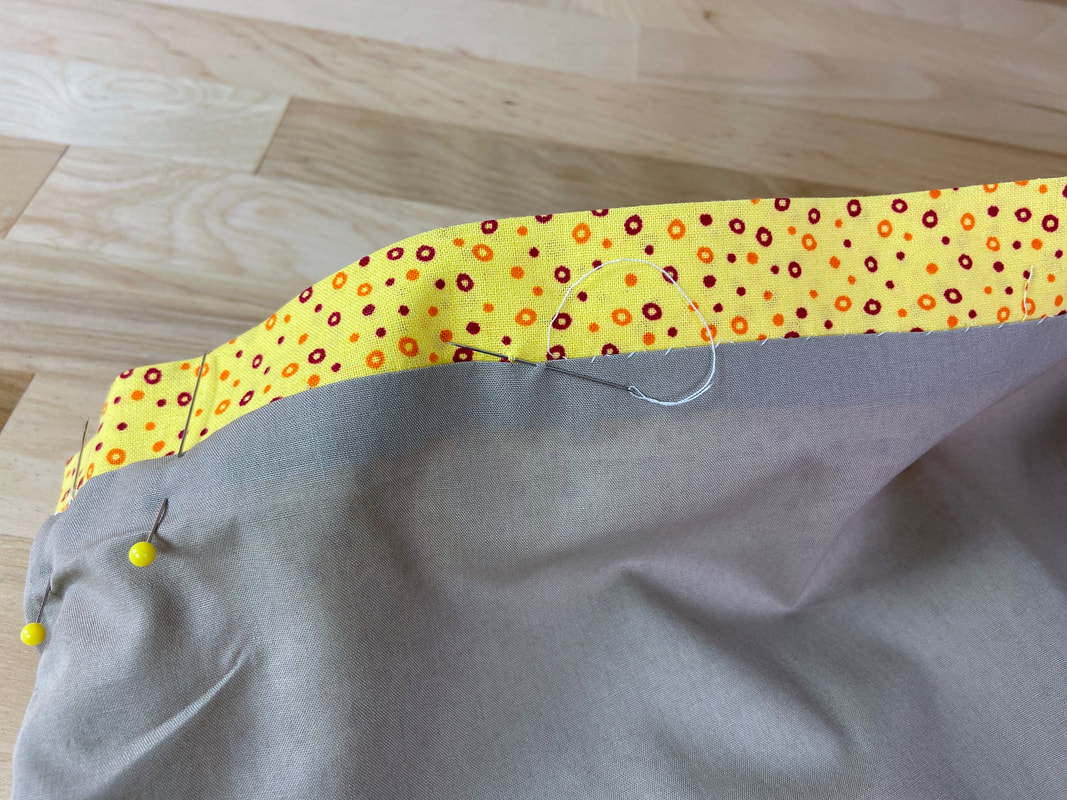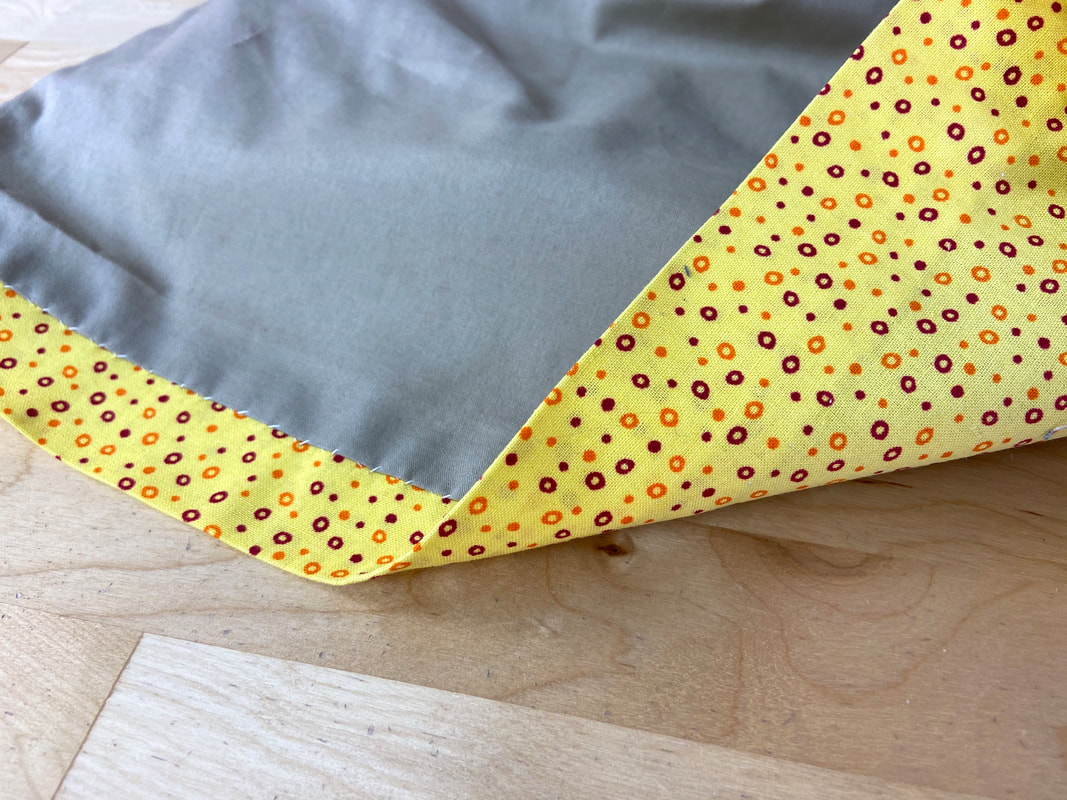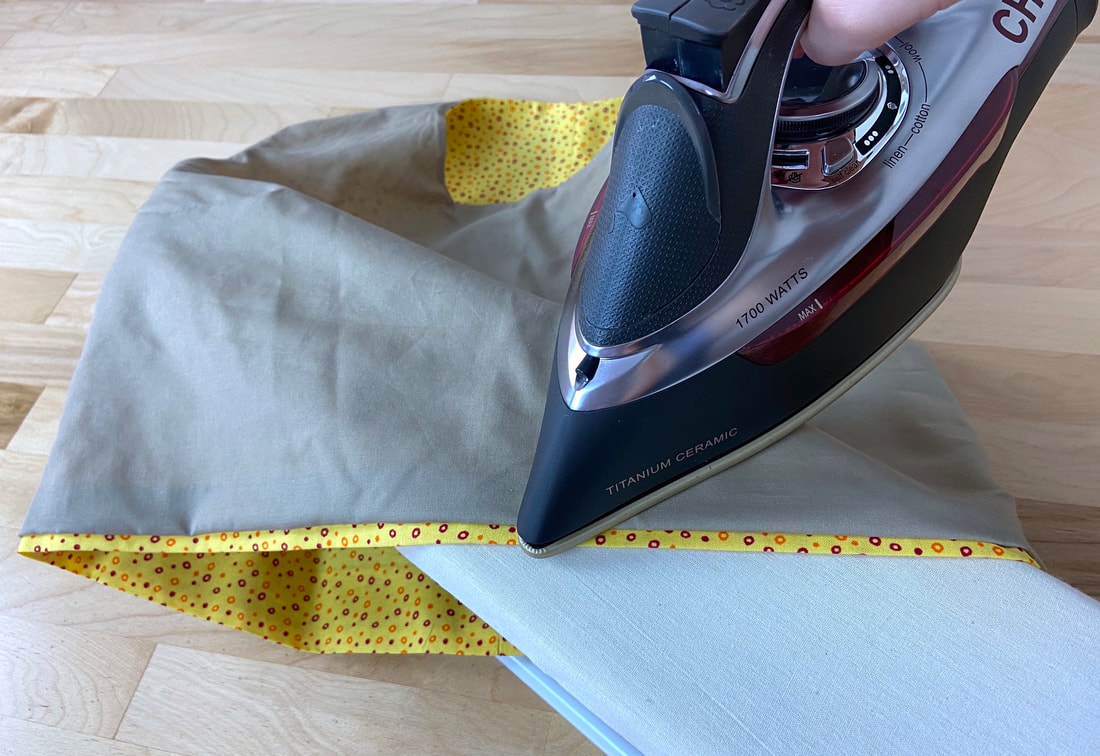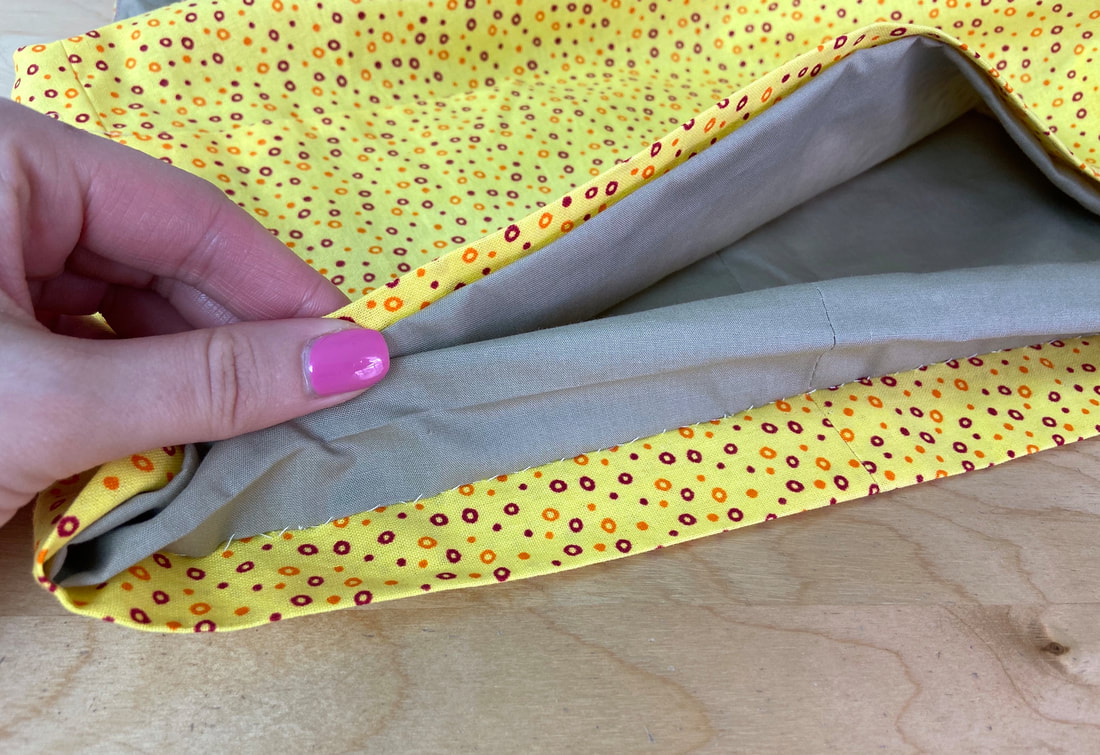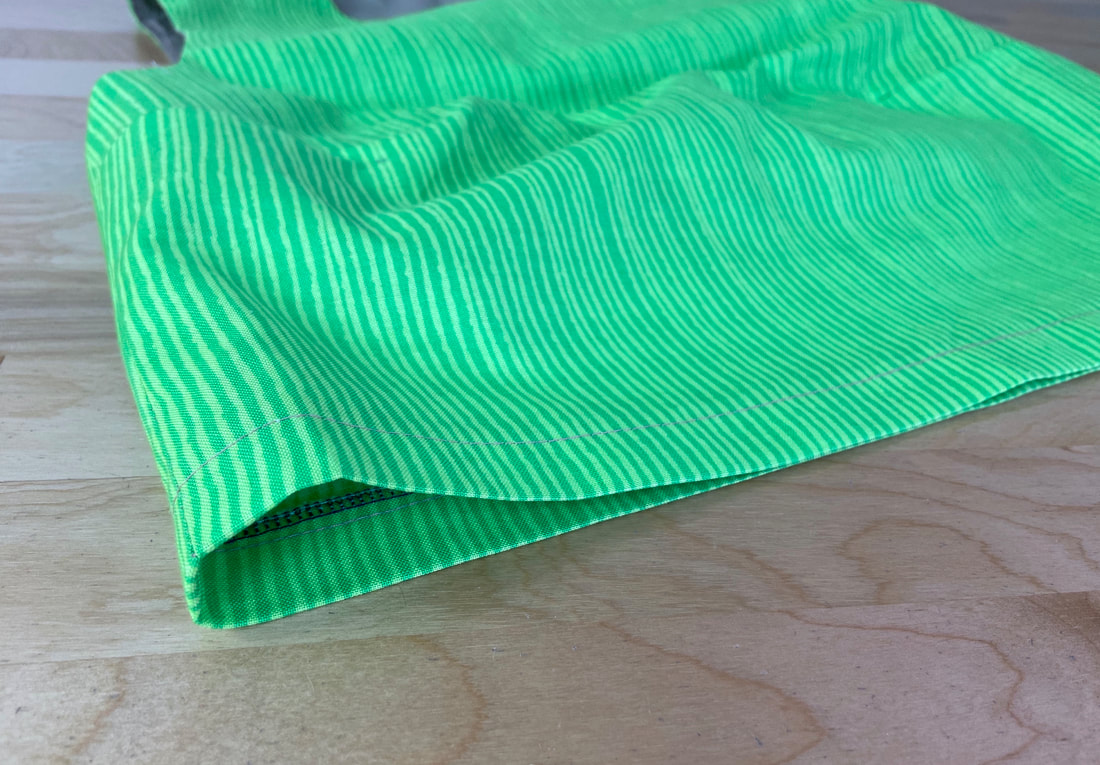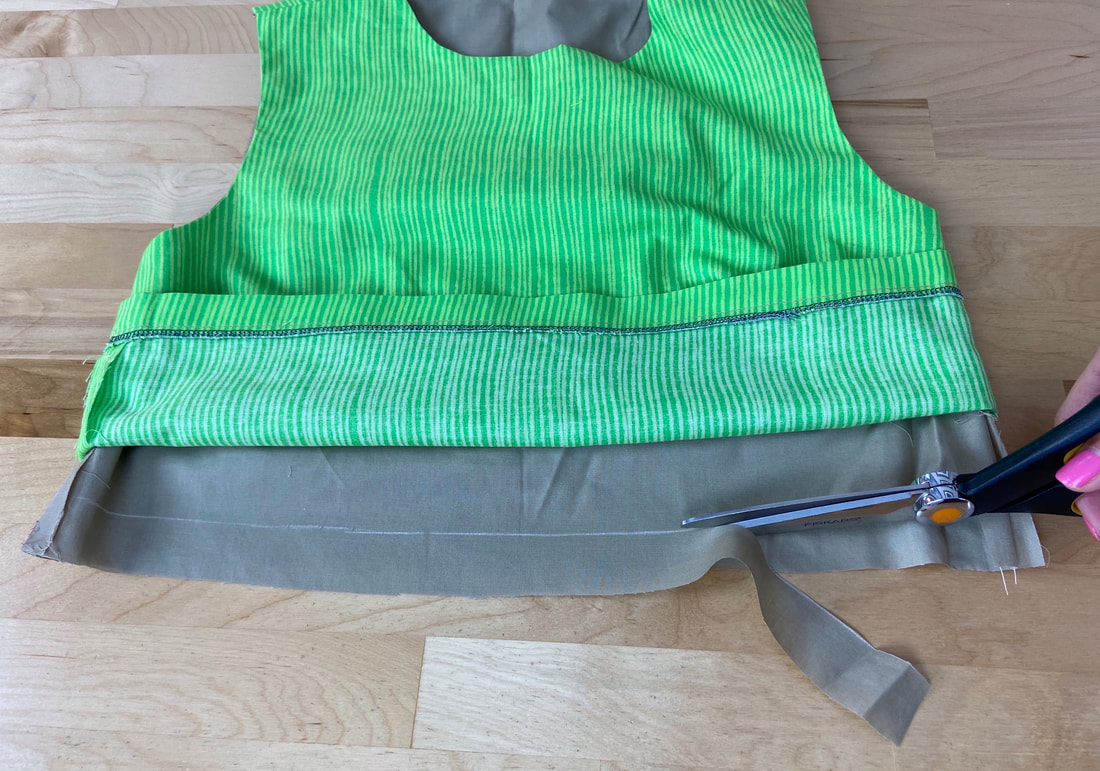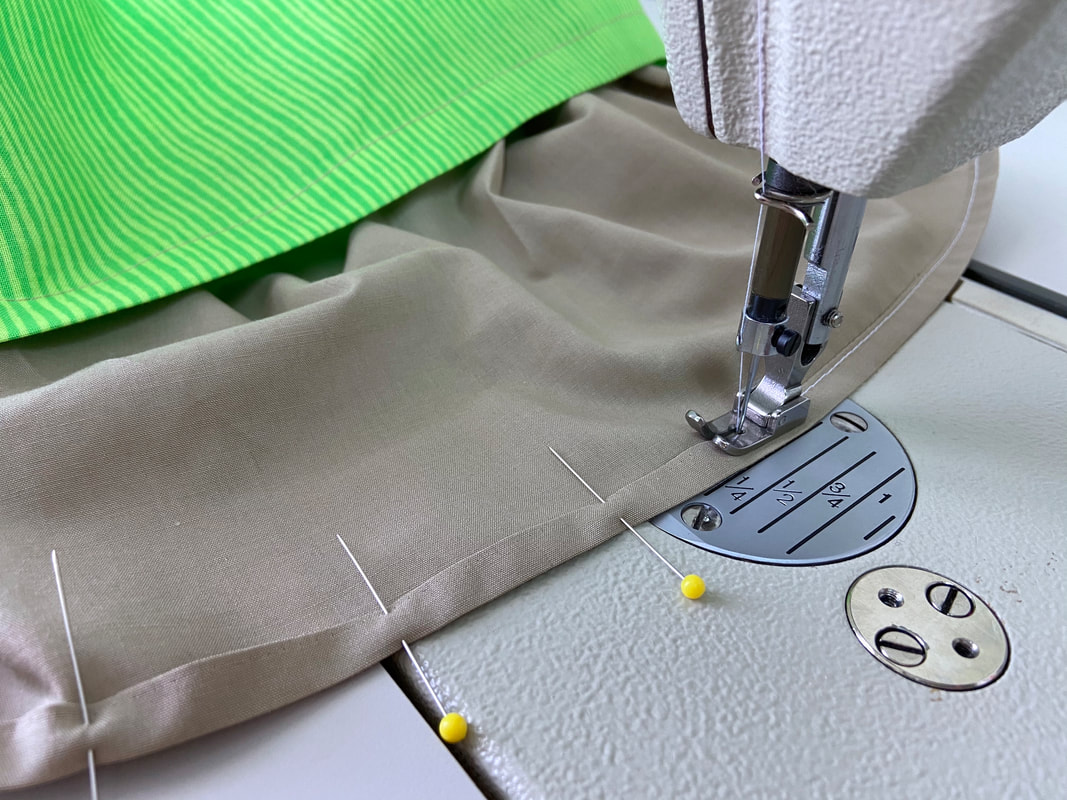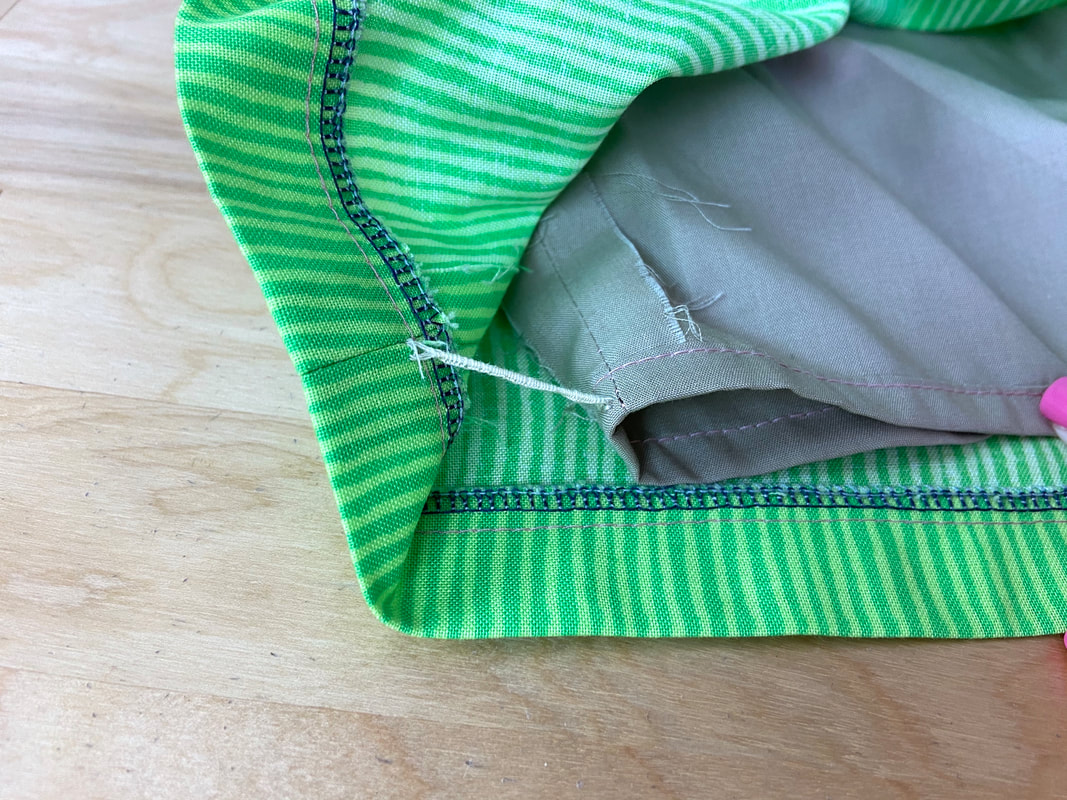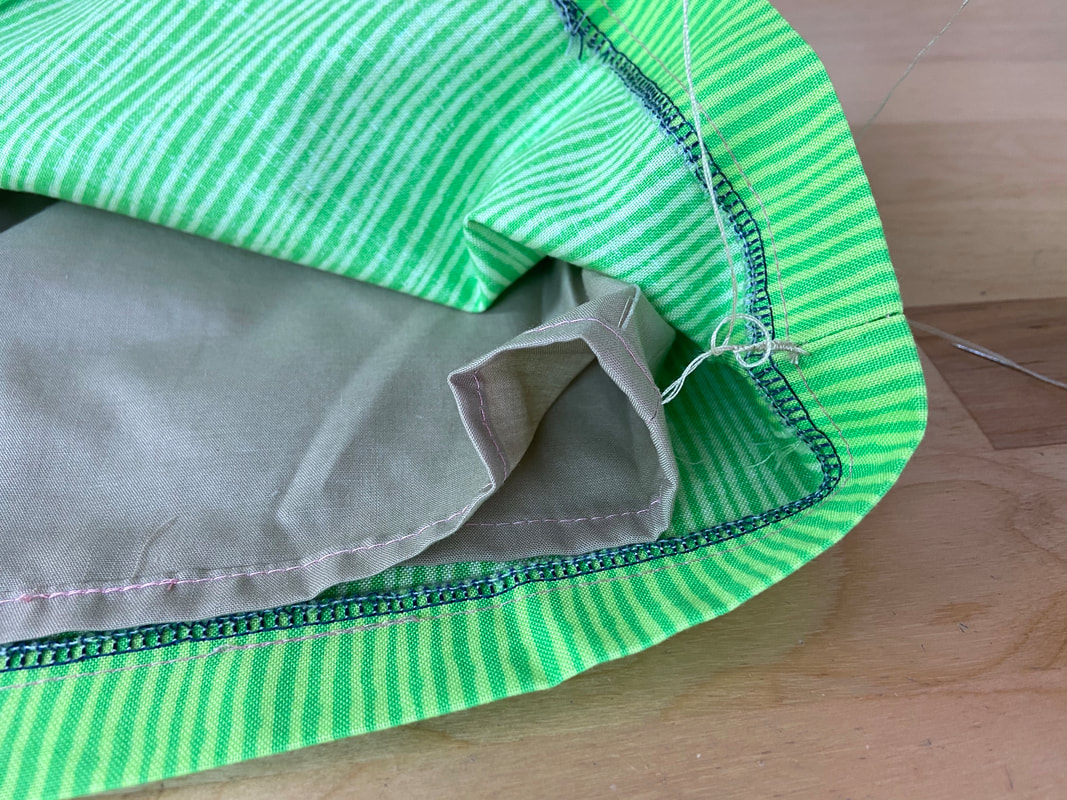You cannot sew a fully lined garment without completing the lined hem. Sealing the bottom edge of a lining layer is often a more complex task for sewing beginners.
A perfectly-finished lined hem has just enough excess to gently fold over the garment’s hem allowance edge without peeking from underneath the hemline, or causing strain and tension in the body of the finished garment.
To finish a lined hem, you have to strike the perfect balance between ease and tension.
Below are three different techniques you can use to finish a lined hem. The first is mostly completed by machine, the second is fully sealed by hand, and the third method walks you through the process of sewing a free-hanging lined hem.
The garment used in this tutorial opens at the front in a conventional fashion.
How To Sew A Lined Hem By Machine
1. Fold the hem allowance towards the wrong side of the garment, and iron this fold. This folded edge should correspond to the finished hemline.
2. On the lining layer, measure 1” down from its hemline and trim the excess hem allowance below the 1" mark.
When the garment hem is folded up in Step 1, the new lining edge should extend about 1” past the garment’s folded hem.
Important note: Trimming the lining in this manner should only be done if the lining and garment pieces are identical in length. If your pattern set includes separate lining patterns, they have already been drafted to the right length and thus will not need to be trimmed.
3. Starting on one end of the garment opening, align the bottom edge of the lining to the garment hem allowance edge such that the fabric face sides are touching as shown.
This may feel a little unnatural to do but keep aligning the two edges together in this manner until you arrive at about halfway down the hem length. Pin perpendicular to the edge as you align.
4. Machine stitch the two edges together at ½” seam allowance, stopping at the hem’s midway point.
Flip the lining and garment layers back on their right side as shown.
5. Starting on the other side of the garment opening, align the lining edge to the garment’s hem allowance edge as described above. Align and pin perpendicularly until you arrive at about 5”-6” from where the other stitch stops.
6. Again, machine stitch at ½” seam allowance up to the point where you stopped pinning in Step 5 above.
As a result, there should be a 5”-6” gap between the two stitches. This gap will allow you to flip the hem on its right side.
7. Iron the edge of the lining within the open gap at ½” inward such that the folded edge blends into both stitched sides as shown.
8. Slipstitch the folded edge of the lining to the garment hem allowance layer underneath. The slipstitched gap should be completely sealed and blend into the finished lining on each side.
To learn how to slipstitch, follow the steps in this tutorial: Hand-Applied Blind Stitches
9. Bring the lining down and gently iron to flatten it. The lining's finished folded edge should be positioned at about 3/4” up from the garment’ finished hemline.
10. From the wrong side of the hem, tack the hem allowance down at each crossing seam. When hand tacking, only catch the hem allowance and seam allowance layers underneath. There should be no stitches visible on the face of the garment.
Learn more about applying tack stitches in this tutorial: Hand-Applied Tack Stitches
How To Finish A Lined Hem By Hand
1. Fold the garment hem allowance up such that the folded edge corresponds to the garment’s finished hemline and iron it in this position
2. Keeping the hem in this single-folded position, secure the hem allowance edge with a catchstitch or regular hemming stitch prior to completing the lining.
Learn how to catchstitch by following the steps in this tutorial: Hand-Applied Blind Stitches
3. If the lining is the same length as the garment layer, measure 1” down from the lining hemline and trim the excess hem allowance below the 1" mark.
4. Fold the lining edge inwards such that it aligns with the blindstitched hem allowance edge. When the two edges match, the bottom lining fold should be positioned about ¾” up from the garment’s finished hemline.
Iron the lining edge towards the fabric’s wrong side at ½” throughout. If needed, you can insert pins perpendicular to the edge to keep the fold in place.
5. Align the folded lining to the garment’s hem allowance such that both raw edges are aligned. Pin the lining to the garment in this position.
6. Slipstitch through the lining fold and hem allowance layer (only) underneath. No visible stitching should show on the face of the garment.
Learn more about slipstitching in this tutorial: Hand-Applied Blind Stitches
7. After slipstitching, press the lining down such that it creates a new fold. Gently iron this finished fold.
How To Finish A Free-Hanging Lining Hem
1. Finish the garment hem using your preferred method. Keep in mind that as opposed to a fully enclosed lining, a free hanging lining will not completely hide the hem allowance, thus you’ll need to consider a finish more suitable for an unlined garment. Consider fraying fabric edges especially.
2. If the lining layer is identical in length to the garment, trim the lining hem allowance completely off (down to the hemline).
Since free hanging lining is conventionally positioned about 1” up from the garment’s hemline, trimming the lining hem allowance off allows you exactly 1” to fold and clean finish the lining’s hem.
3. For best results, use a folded-up hemming technique to clean finish the lining layer. In this example, the lining is double folded (at 1/4” each time) and topstitched to secure the fabric’s raw edge.
Lining is conventionally a thin, lightweight fabric thus it works great with folded-up hem finishes.
4. Once both lining and garment hems are finished, tack down the lining layer to the garment at each seam. To do this effectively, a 1” French tack is used. A French tack is a thread chain applied between the garment and the lining to loosely connect them at the seams.
In this case, apply a French tack from the garment’s side seam, within the hem allowance area, to the corresponding lining seam, within the lining’s hem allowance surface.
To learn how to sew a French tack, follow the steps in this tutorial: Hand-Applied Tack Stitches
A French tack prevents the lining layer from shifting during wear, but is also loose enough not to cause strain or tension at the garment's hem.

